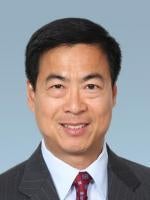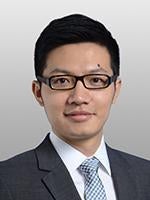China has reorganized many of the ministries and commissions under its chief executive body, the State Council, creating a new super-ministry to replace the China Food and Drug Administration (“CFDA”) and other healthcare agencies. The 13th National People’s Congress approved the Institutional Reform Plan of the State Council (“the Plan”) on March 17, 2018. Among the reforms under the Plan, the primary agency in charge of food, drug device, and cosmetics regulation, CFDA, and the chief healthcare regulator, the National Health and Family Planning Commission (“NHFPC”), have been merged into other agencies. This change could have significant implications for the future development of China’s food and drug and healthcare regulatory regime and policies.
The Plan presents only a very general outline of what will ultimately be significant reorganizations of China’s central government bureaucracy. This alert highlights the key food and drug-related aspects of the Plan and issues to monitor for in the months ahead.
Formation of the State Market Regulatory Administration
General Features of the New Administration
The Plan states that the current CFDA, the product and import quality regulator (the General Administration of Quality Supervision, Inspection and Quarantine, GAQSIQ), the business, consumer protection, advertisement regulator (State Administration for Industry and Commerce, SAIC), and certain subdivisions of other agencies will be replaced by a new authority known as the State Market Regulatory Administration (“New Administration”). The New Administration will be established as a “directly subordinate agency” 1under the State Council.
Although many details are still unclear, this could mean that the New Administration will handle food, health food, infant formula, medical food, cosmetic, and medical device regulation. A policy document may be issued in the near future to explain these points. The Plan expressly states that the New Administration will include drug regulation.
The New Administration will also now have the food and drug regulatory responsibilities of other commissions or subdivisions, such as the duties of the Food Safety Commission of the State Council, the Certification and Accreditation Administration, and the Standardization Administration. This means that the New Administration will have broad powers over food safety policy, powers to enact national standards in each of these areas, instead of only drafting them like CFDA, and powers to accredit laboratories and certain food establishments abroad (e.g., dairy and meat products).
Unlike CFDA, the New Administration will also have a variety of other responsibilities that are not related to science-based determinations about product safety and effectiveness. For example, it will have the company registration, consumer protection, advertising and anticorruption enforcement powers currently held by SAIC and the price regulation and antimonopoly enforcement powers of NDRC.
It has recently been confirmed that the most recent commissioner of CFDA, Jingxuan Bi will become the party secretary (a party secretary is not the minister of an agency but exercises important influence over the direction of the agency) for the New Administration, and the most recent commissioner of SAIC, Mao Zhang will become the commissioner of the New Administration and deputy party secretary. However, it still remains to be seen how this merger will affect the organization and approach to regulation of CFDA.
Formation of the State Drug Administration
The Plan creates a State Drug Administration under the New Administration to handle “the special nature of drug regulation.” The State Drug Administration will exercise control over provincial level Drug Administrations with similar functions. According to another recently released document [Citation], local government agencies at the provincial level and below should have more discretion than before, but it is not clear how that will work with the Drug Administrations.
The Plan also states that Market Regulatory Administrations at the sub-provincial city and county levels of local government will be responsible for the regulation of drug distribution and sales. This differs from the current arrangement in certain provinces in which the local FDAs at city and county levels have not been merged with other local agencies and have been independently handling the initial review of distribution license applications and enforcement of distribution rules for drugs, medical devices, foods and health foods. In other provinces, the lower level FDAs at city and county levels merged in 2014 with the local administrations for industry and commerce and quality supervision and inspection bureaus.
Continuation of Drug and Device Reforms
The establishment of the New Administration follows significant policy reforms in 2017 (see our alert here). The State Council and the China Communist Party jointly issued a mandatory plan (“Innovation Opinion”) to reform key aspects of the system for approving drugs and devices and establish important incentives, including intellectual property protections and expedited approval programs, to encourage innovation. To implement the reforms introduced in the Innovation Opinion, CFDA is currently in the process of revising the fundamental laws, regulations, and rules regulating pharmaceutical and medical device products. However, as of March 2018, many of the new and revised laws and rules are not final. It is likely that the New Administration and the new State Drug Administration will continue to implement these reforms under the Innovation Opinion, but it is not clear to what extent it will continue to develop the same draft rules that CFDA has issued since October 2017.
National Health Commission to Replace NHFPC
China’s current NHFPC regulates both family planning and the healthcare system, including doctors, hospitals, and the center for disease control. Under the Plan, the family planning part of the agency will be dropped and the NHFPC and the Office of the Leadership Group for Deepening the Medical and Health System Reform, a key policy office directly under the State Council (the “Reform Office”), will merge into a new authority known as the National Health Commission (“New Commission”).
The New Commission will be established as a constituent department of the State Council. It will take over all or some of the responsibilities of the current authorities including NHFPC, the Reform Office, the National Working Commission on Ageing, the Ministry of Industry and Information Technology, and the State Administration of Work Safety Supervision. The State
Administration for Traditional Chinese Medicine also will be under the New Commission. The New Commission’s main responsibilities, among other things, will include developing healthcare policies, coordinating and expanding healthcare reform, organizing the national essential drug system (i.e., drugs reimbursed by all health insurance plans), regulating in the areas of public health, medical services and health emergencies. A more detailed plan for the New Commission will likely emerge in the coming months.
The Plan will also remove the part of NHFPC that covered state-sponsored health insurance in rural areas and merge it with portions of various other agencies handling different aspects of China’s state health insurance system to form the State Medical Insurance Bureau. State health plans are the primary source of coverage in China.
1. The administrative agencies of the State Council consists of the General Office, the constituent departments (e.g. the Ministry of Justice and NHFPC), the directly subordinate agencies (e.g. CFDA), and other departments.








 />i
/>i

